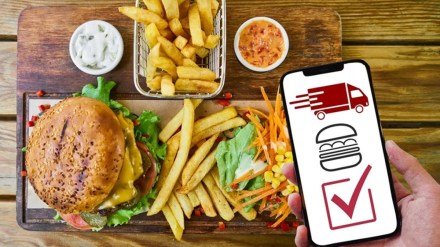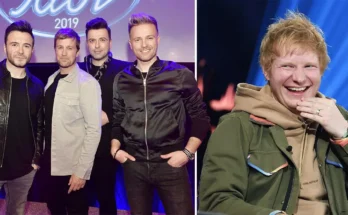In a bold move that underscores the evolving dynamics of the fast-food industry in Southeast Asia, Westlife Development Ltd — one of McDonald’s largest franchise partners in India — has announced its strategic intent to continue expanding its footprint with larger-format McDonald’s outlets. The decision marks a significant shift in how quick-service restaurants (QSRs) are approaching retail space, consumer experience, and operational efficiency in a post-pandemic world marked by changing consumption patterns and customer expectations.
Westlife Development: The Force Behind McDonald’s in Western and Southern India
Westlife Development Ltd, through its subsidiary Hardcastle Restaurants Pvt Ltd (HRPL), owns and operates McDonald’s restaurants across western and southern India. With a network of over 370 outlets, the company has played a pivotal role in localizing the brand, innovating its menu, and delivering consistent customer service tailored to Indian preferences. Over the years, Westlife has built a reputation for adapting global QSR strategies to local needs, and its latest move further demonstrates this agility.
The Bigger the Better: Why Larger Outlets?
Westlife’s push towards larger McDonald’s outlets stems from several converging factors:
- Changing Consumer Preferences: Modern Indian consumers, especially the urban millennial and Gen Z segments, are increasingly seeking more than just food—they want an experience. Larger outlets provide space for immersive experiences, community seating, and family-friendly zones. This shift is a direct response to customer demands for better ambience, more comfortable seating, and areas that cater to gatherings, celebrations, and long dining durations.
- Menu and Operational Expansion: The company has significantly expanded its offerings over the years, including McCafé, breakfast menus, and local specialties. Larger spaces allow Westlife to accommodate more kitchen equipment, smoother workflow, and dedicated sections such as beverage counters and dessert stations. This not only enhances efficiency but also improves customer service and speed of delivery.
- Omnichannel Strategy: With the rise in digital ordering, drive-thrus, and McDelivery services, space is becoming an operational asset. Bigger outlets can seamlessly integrate these services with dedicated pick-up points and drive-thru lanes, minimizing wait times and improving customer satisfaction.
- Location-Based Tailoring: Many of the new larger-format stores are planned for high-footfall locations such as malls, transit hubs, and major commercial corridors. These locations naturally require more capacity to handle peak-hour traffic and deliver a premium customer experience.
A Post-Pandemic Pivot
The COVID-19 pandemic forced many players in the food and beverage industry to reassess their strategies. While some scaled down or moved to delivery-only models, Westlife took the opportunity to reevaluate the in-store experience. The larger store model is seen as an antidote to the pandemic-induced isolation — offering customers a social, vibrant environment where hygiene and comfort are prioritized.
To support this strategy, Westlife has also invested in improving air quality, touchless ordering kiosks, enhanced sanitation protocols, and tech-driven ordering platforms. These enhancements are more feasible in larger physical formats where spatial planning can be optimized.
Economic and Strategic Implications
From an investment standpoint, larger McDonald’s stores signal confidence in the Indian QSR market, which is poised for exponential growth. According to industry reports, India’s QSR segment is expected to grow at a CAGR of over 20% over the next five years, driven by rising disposable incomes, urbanization, and a young demographic.
Larger outlets also offer better revenue per square foot over time, despite higher initial capital expenditure. They attract higher footfall, enable upselling through diversified offerings (like premium coffee and desserts), and are more suitable for digital integrations like self-order kiosks and AI-driven queue management systems.
Moreover, Westlife’s move aligns with McDonald’s global push toward modernizing and remodeling its outlets. In many international markets, McDonald’s has transitioned to the “Experience of the Future” (EOTF) format—characterized by sleek interiors, digital ordering, table service, and a more relaxed dining atmosphere. Westlife’s strategy is a step toward aligning with this vision, customized for the Indian consumer.
A Look Ahead
Westlife has indicated that its expansion plans are not just limited to Tier-1 cities. With growing demand in Tier-2 and Tier-3 cities, the company intends to bring larger, modern McDonald’s stores to these regions as well. These cities present a ripe opportunity for expansion, given their rising middle class and appetite for branded QSR experiences.
In addition, sustainability will play a key role in the design of these new outlets. Westlife is already exploring energy-efficient appliances, green building materials, and water conservation measures — all of which can be more effectively implemented in larger stores with new infrastructure.
Conclusion
Westlife Development’s decision to continue with larger McDonald’s outlets is more than a real estate or design strategy — it is a vision for the future of dining in India. It acknowledges the fast-changing expectations of consumers, the need for operational scalability, and the immense opportunity in the Indian QSR market.
As the brand gears up for a new chapter, customers can expect a McDonald’s experience that’s not only about great food but also about space, comfort, and innovation — served with a side of fries.
Would you like this formatted for publication (e.g., blog, magazine article, or company press release)?



